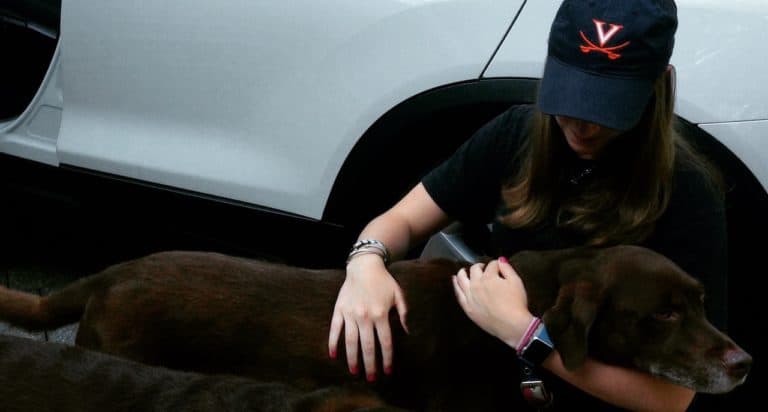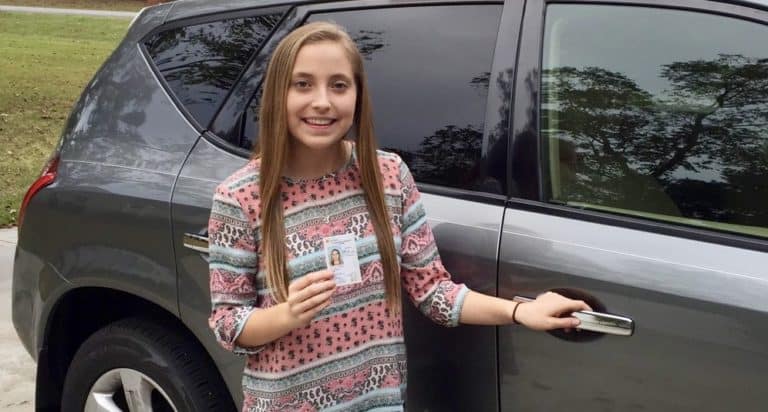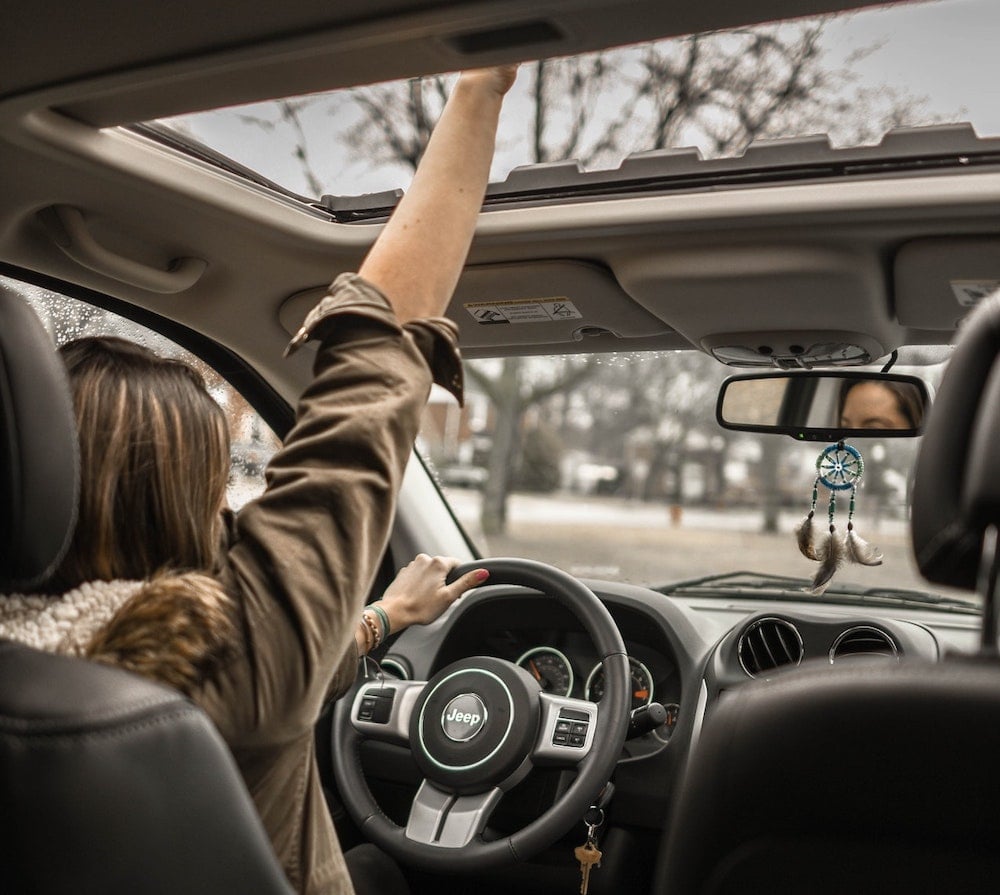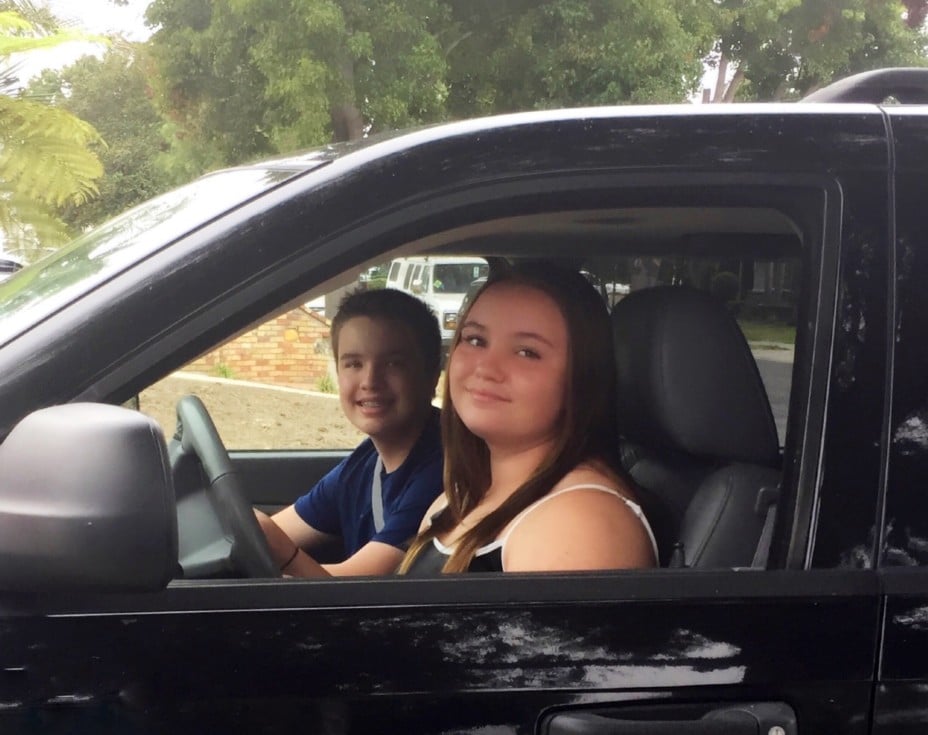Much like toddlers, teen drivers are challenging, illogical, and require tremendous patience. We have chipped away a little at our longevity and good cheer by licensing three teens, but, as parents, our participation is unavoidable. So, we press on, optimistic and slightly worse for the wear. Although it has been harrowing at times, some universal truths and tips have emerged through all three experiences.
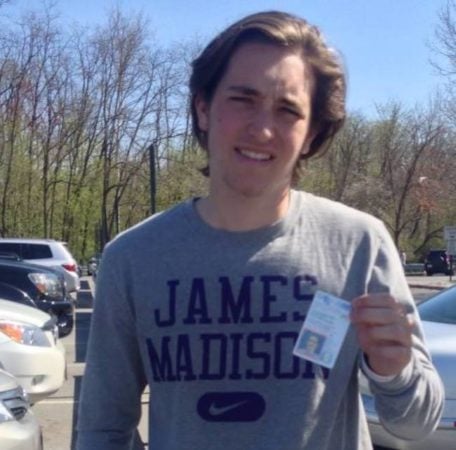
Advice for parents teaching teens to drive
1. No child approaches driving the same way.
I have three sons, all relatively close in age, and each required a different method of driving instruction. My oldest was a natural and had a severe case of overconfidence that needed taming. My second was hesitant and took his sweet time, only getting licensed months after he was eligible.
My youngest is a hybrid of the two but a varsity sport is cutting into his driving time, so it is taking F-O-R-E-V-E-R to get his hours in. All were challenging in their own right.
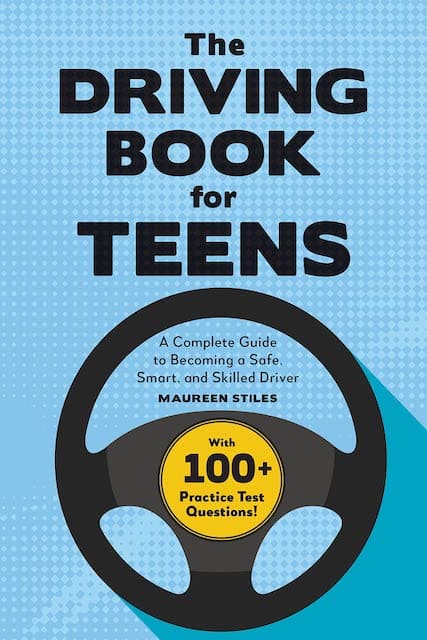
2. Buy the New Driver Magnet in triplicate.
That magnet on your car is like a giant billboard asking for grace and prayers as you roll along the road. Other parents nod in solidarity, and the general public is warned to keep their distance. I recommend multiple magnets because, at one time or another, someone (I am looking at you) is going to rip that embarrassing thing off the back of the car and not remember where it was hastily flung.
3. You are not prepared even if you think you are.
Each child brings a different terror to the process, and there is simply no way to anticipate this new heart-stopping element until you are wide-eyed and in the moment. I thought I had it all figured out after my oldest, and then number two came along and I found myself white-knuckled and not so cocky after all.
4. There is no common sense for a new driver.
Remember, they are used to staring into space with headphones or hanging out in the backseat glued to their phone, not watching us maneuver an automobile. This new, interactive portion of being in a vehicle is entirely new.
5. Conversely, you are not used to participating in the driving experience while in the passenger seat.
Everything is backward and surreal the first time you sit across the center console from your 16-year-old. I found great success starting only in parking lots until we were more comfortable with our new role in the vehicle.
6. Driving school is only part of the process
Many families opt out of teaching their offspring and look to driving school to fill in the gaps. Be sure to check your state requirements. Many, if not most, states require dozens of behind-the-wheel hours before licensure. Driving schools are great for the basics and laying the groundwork, but daily practice driving is essential to ensuring kids are ready to pass the road test and safely drive unaccompanied. In that same vein, we come to the next point.
7. Do not skirt the required driving hours.
All-weather driving is imperative if you have a climate that accommodates it. I still have flashbacks to a legal U-turn in the rain where I may or may not have shrieked, “We are all going to die,” as we spun out on a six-lane road. Thankfully, that vision still haunts my sons, and hopefully, they will never take a turn that quickly in the rain again.
8. Familiarize yourself with the driving test course.
YouTube gets a bad rap, but the one time I sang its praises was when we found Driver’s Ed videos. We learned the course and drove it multiple times leading up to our in-car sessions and again before the test. My most apprehensive driver and I also sat and watched the parking portion of the test at the testing facility. Your in-car sessions may cover this, but we found doing it more than once was beneficial, making it more rote on the day of the test.
9. Buy the cones.
Seriously buy the cones and measure out the distances allowed for parking like some big, old geek. This is one area where you should not guesstimate. Inches make a difference in passing or failing parking on the test. Do anything you can to avoid a return trip to the DMV to repeat a test.
10. Read, read, and read some more.
There are forms to be submitted from the high school, parents, and the Driver’s Ed institution, as well as insurance cards and other necessary items. Forgetting even one thing will mean your child never even makes it to the testing portion of the appointment. Teen turned away from licensure due to parental error = longest drive home in the history of mankind.
11. Your child will become hyper-critical of your driving the minute they get the manual in their hot little hands.
Decades of driving experience will evaporate as your every bad driving habit is dissected and discussed, complete with page and paragraph notation to prove your lack of roadworthiness.
12. One parent will be better at this driving tutorial than the other.
Whether it is because of overall temperament, time constraints, or how one interacts with the kids, one parent will draw the short straw. This is a rare instance of winning and losing simultaneously.
13. Figure out a strategy for the radio or music immediately.
Driving without tunes is like losing a limb to my children. Being forced to sit with their thoughts is torture that old people — namely me — are incapable of understanding. So, we had to create some rules about music and distractions. For us, the kids can hook up their phones to the car in the park and listen to a playlist that takes away the channel-changing aspect.
14. If fancy gadgets are in the car, don’t let them use them.
We teach the kids to drive on an essential, stripped car with no rear camera or warning lights on the mirrors. They graduate to the fancier cars once they habitually rely on their senses to drive. If all of your cars have these upgrades, I suggest disabling them or forcing the new drivers to look behind and around them before backing up or switching lanes.
These driving aids can fail to detect something in a blind spot, a rental car may not have these options, and many testers will cover a rear camera during the driving test. Good, basic driving skills will never go to waste.
15. Nothing replaces modeling good behavior.
Once your teen is invested in the driving experience, they will be looking to see how you react to other drivers and handle yourself out on the road. Yes, the kids will be using the manual against you, but there is more to driving than the road rules. Some nuances and niceties make you a good driver and citizen.
I guess this last truth expands beyond driving and into all aspects of parenting. What we do is much more important than what we say and will become the blueprint for our kids as they move into adulthood.
More Great Reading:
Teen Driving Contract: What Is It and Why Do Parents Need One?


